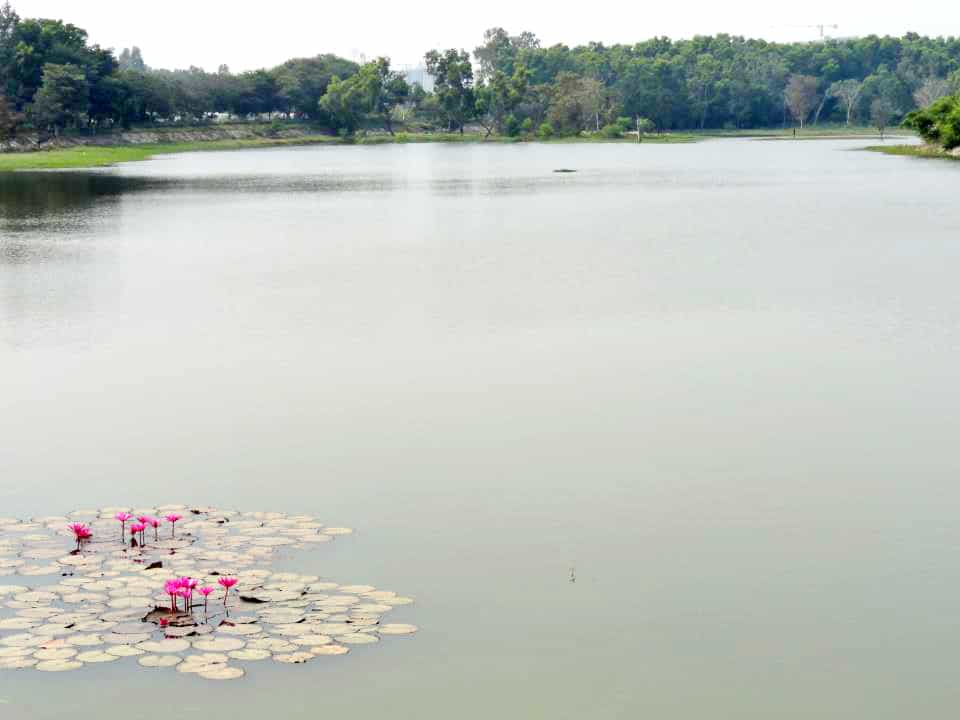In 2023, the BBMP launched Kere Mitra (lake friend) to ensure transparency in lake management. It was introduced to bridge the gap between citizens and the authorities in the daily maintenance of lakes, which fall under BBMP’s custody. The Kere Mitras or lake volunteers are selected for a period of three months. While some were satisfied with the programme, others expressed their reservations about the selection process and lack of training.
However, is the initiative achieving its intended goals?
The BBMP seems satisfied with the applications. The next phase of Kere Mitra will not be open to new applicants. “In the first phase of Kere Mitra we received about 700 applications for 124 lakes. We selected 124 Kere Mitras from these applications. We will continue with the same batch for the next phase,” says BBMP engineer Vijaykumar Haridas.
Read more: MOUs or no MOUs, citizen groups continue the fight to save Bengaluru’s lakes
Application process
A notification was announced in newspapers. Applicants had to fill a registration form attached with the details of their e-mail ID, phone numbers, and address proof (preferably voter ID). Only citizens residing in the same ward as that of the lake could enrol as a Kere Mitra.
Initially, till October 2023, the BBMP received a lukewarm response, but after quite a lot of promotion, they managed to close applications by March 2024. The uploaded information is accessible to all the officers so that action is taken. Each Kere Mitra was issued a unique ID and password for them to raise concerns and upload photos of the issues they encounter.
The Kere Mitra monitored the following activities in lakes:
- Pathway sweeping
- Bund slope cleaning
- Waterbody de-weeding
- Inlet cleaning
- Outlet cleaning
- Wetland cleaning
- Jungle clearance
Mixed responses from Kere Mitras
V Ram Prasad, co-founder of Friends of Lakes and a former Kere Mitra, says that the selection process needed more deliberation. “There was no training of the volunteers and some of them do not have proper knowledge about lake preservation. It seems like Kere Mitra is yet another complaints forum, and some of the complaints are not even being resolved on time.”
He points out that there are already thriving citizen-led lake groups, some of which have been monitoring lakes for years now. “Why not connect with them to monitor the lakes? They are knowledgeable and committed.”

The other issue is that one volunteer per lake may not be adequate. Depending on the size of the lake, more volunteers would be required.
Kavitha Kishore, a Kere Mitra of Lower Ambalipura lake, says the BBMP has been prompt with responses. “I think Kere Mitra is a fantastic idea because the volunteers can directly raise concerns with the BBMP and they send contractors to get the work done,” says Kavitha. She adds that Preeti Gehlot, Special Commissioner for Forest, Environment and Climate Change, BBMP, has been consistently communicating with volunteers and addressing some of the concerns.
What Kere Mitra misses
The BBMP chief engineer says that an online meeting was held with all the volunteers to discuss how to go about lake monitoring. But the question remains: How effective are online meetings, apps and WhatsApp in fostering an in-depth understanding of lake ecology? There are several nuances to lake management.
“To protect the lake from sewage ingress, the kere mitras need to understand the catchment too,” says Ram Prasad. They need to look into biodiversity aspects inside the lake and around it, and livelihoods dependent on lakes should also be protected.
“Kere mitras should concentrate on core lake assets and water quality than just walking around the path and focusing on cosmetic peripheral aspects only,” he adds.
Read more: Can citizen groups maintain Bengaluru lakes? Legal tussle continues
Not a novel initiative
For a decade, active citizen-led groups have successfully collaborated with the BBMP and restored several lakes in the city. Therefore, Kere Mitra is not a novel idea. In 2011, the civic body handed over the maintenance of 13 lakes to non-governmental entities, through Memorandums of Understanding (MoUs).
Arathi Manay Yajaman, who along with Usha Rajagopalan and a few others formed the Puttenahalli Lake Improvement Trust (PNLIT), says the BBMP should not ignore the hard work of the citizen-led lake groups.
In this Citizen Matters article, Arathi writes about how things changed for citizen lake groups with the High Court Order of March 4, 2020, on a Public Interest Litigation (WP 38401/2014), filed by Citizen Action Group and impleaded by Environment Support Group (ESG) and Leo Saldanha. The PIL appealed for the government to wait for further orders before signing MoUs with “corporate entities.”
The BBMP perhaps did not want to take any chances, so citizen-led lake groups were left in the lurch and their MoUs were not renewed. “It is one big fight to save our 14 years of work,” says Arathi.
Hearings on appeals by lake groups have repeatedly been postponed. “The MoU matter is in court and the next hearing is scheduled next week. It comes back to the question of authority. Who is authorised to take decisions about the lake? Without any authorisation given by the BBMP, the lake groups are irrelevant,” she adds.
The way forward
Considering that citizen-led lake groups have engaged with their neighbourhood lakes for years, three months of overseeing lake management is not enough. “Kere mitras have to promote, propagate and protect functional biodiversity than focus on cosmetic beautification,” says Ram Prasad.
The lake activist believes that there should be a better mechanism for training and handover after the term of the volunteer is over. “This must also be in the form of a document exchange of the activities taken up by the outgoing kere mitra.”
Kere Mitra lake monitoring is now live on the BBMP website